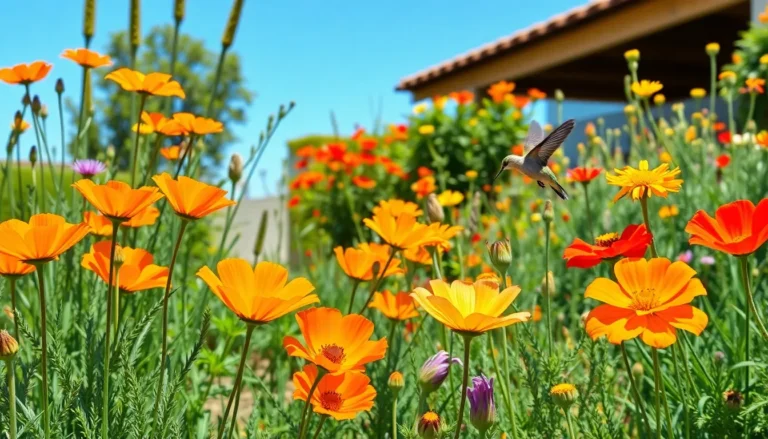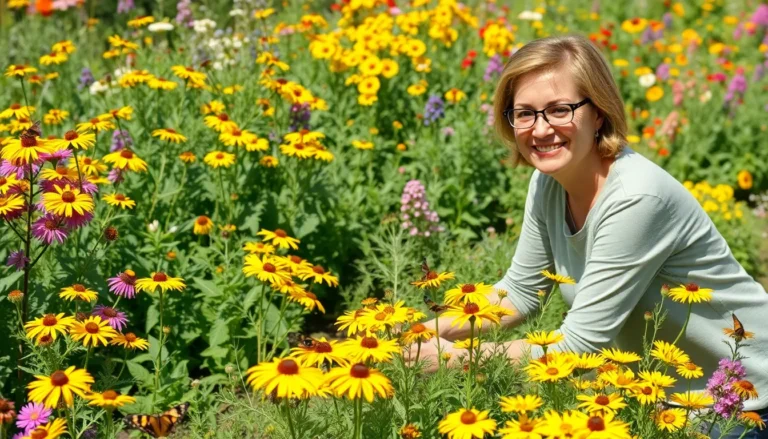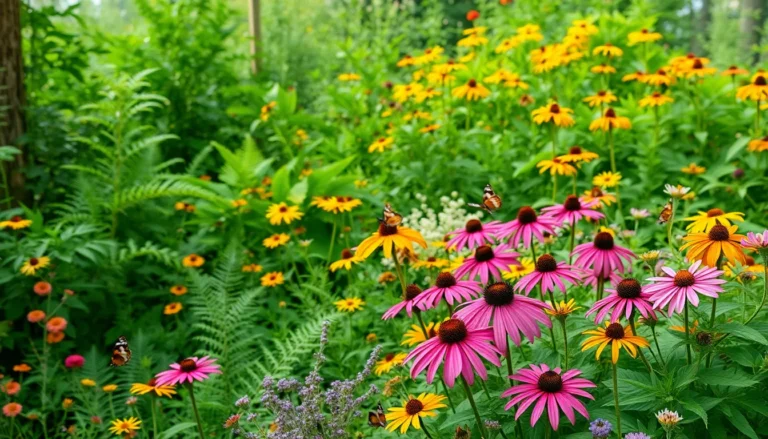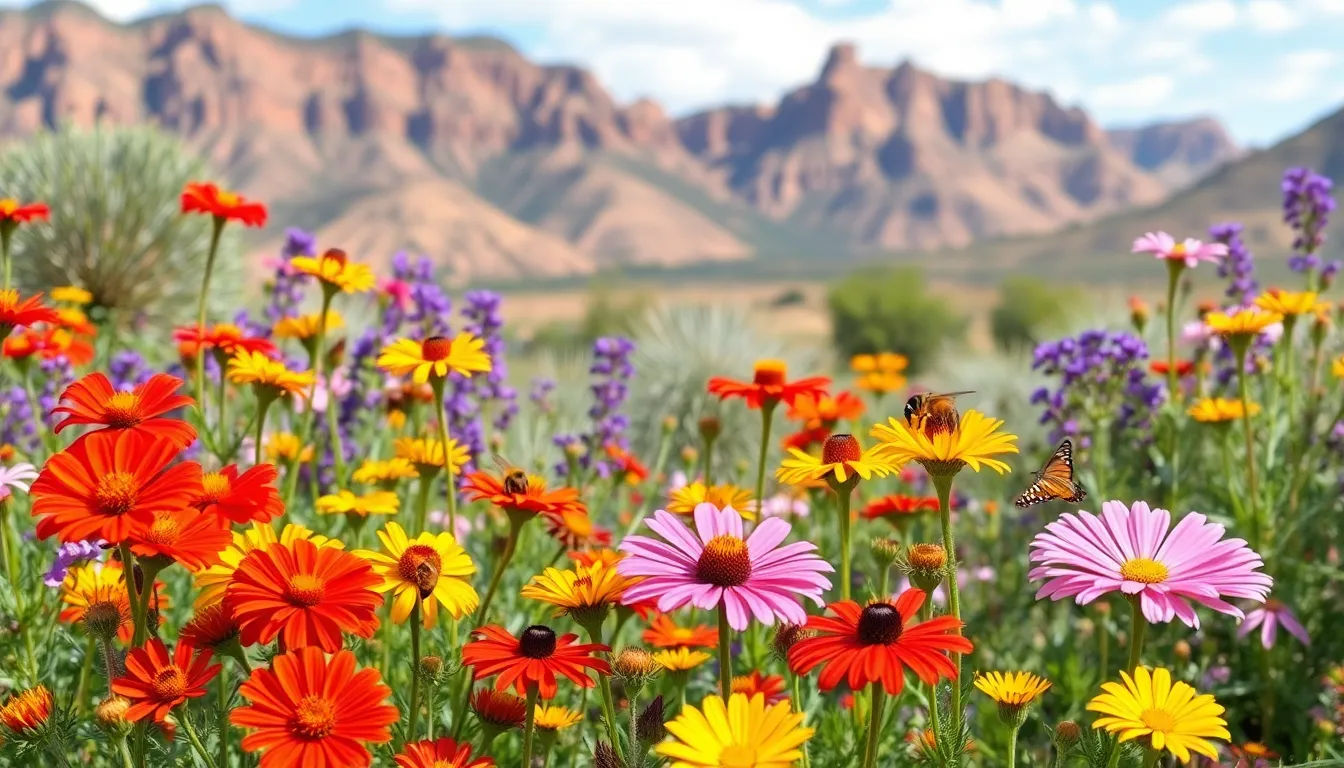
Utah Native Plants: Discover the Hidden Gems That Beautify Our Landscapes
Utah’s native plants are like the unsung heroes of the Beehive State, quietly thriving in the rugged landscapes while most folks are busy snapping selfies at national parks. These resilient flora not only add beauty to the scenery but also play a crucial role in supporting local wildlife and maintaining the ecosystem. Who knew that a humble sagebrush could be the life of the party for pollinators?
Exploring Utah’s native plants is like going on a botanical treasure hunt. From the vibrant Indian paintbrush to the hardy juniper, each plant has its own story to tell. So why not dig a little deeper? Discovering these green wonders can spark a newfound appreciation for the state’s natural heritage and inspire anyone to bring a touch of Utah’s wild beauty into their own garden. After all, who wouldn’t want to be the proud parent of a plant that’s survived the test of time?
Utah Native Plants
Utah’s native plants exhibit a remarkable diversity, thriving in various habitats across the state. These plants play essential roles within their ecosystems, providing food and shelter for local wildlife such as birds, insects, and mammals. Iconic species, including the Indian paintbrush and juniper, adapt well to Utah’s unique climate and soil conditions.
Resilience characterizes these plants, allowing them to endure harsh conditions, including drought and temperature extremes. Wildlife relies heavily on native flora for sustenance, making these species crucial for maintaining balanced ecosystems.
Native plants also enhance the aesthetics of Utah’s landscapes. Wildflowers bloom in vibrant colors during spring and summer months, creating captivating views across the valleys and mountains. By incorporating local plant species into home gardens, residents contribute to the preservation of their natural heritage.
Gardening with native plants fosters a connection to the environment, while also offering low-maintenance solutions that thrive in their natural conditions. Many native plants require less water and are more resistant to pests, making them sustainable options for landscaping.
Exploring Utah’s native flora reveals the state’s rich ecological history. Each plant carries a story, from its role in traditional Native American agriculture to its adaptation within the region’s ecosystems. Appreciation for these plants deepens understanding of local ecology and cultural heritage, encouraging a lasting bond with Utah’s natural landscape.
Importance of Native Plants in Utah
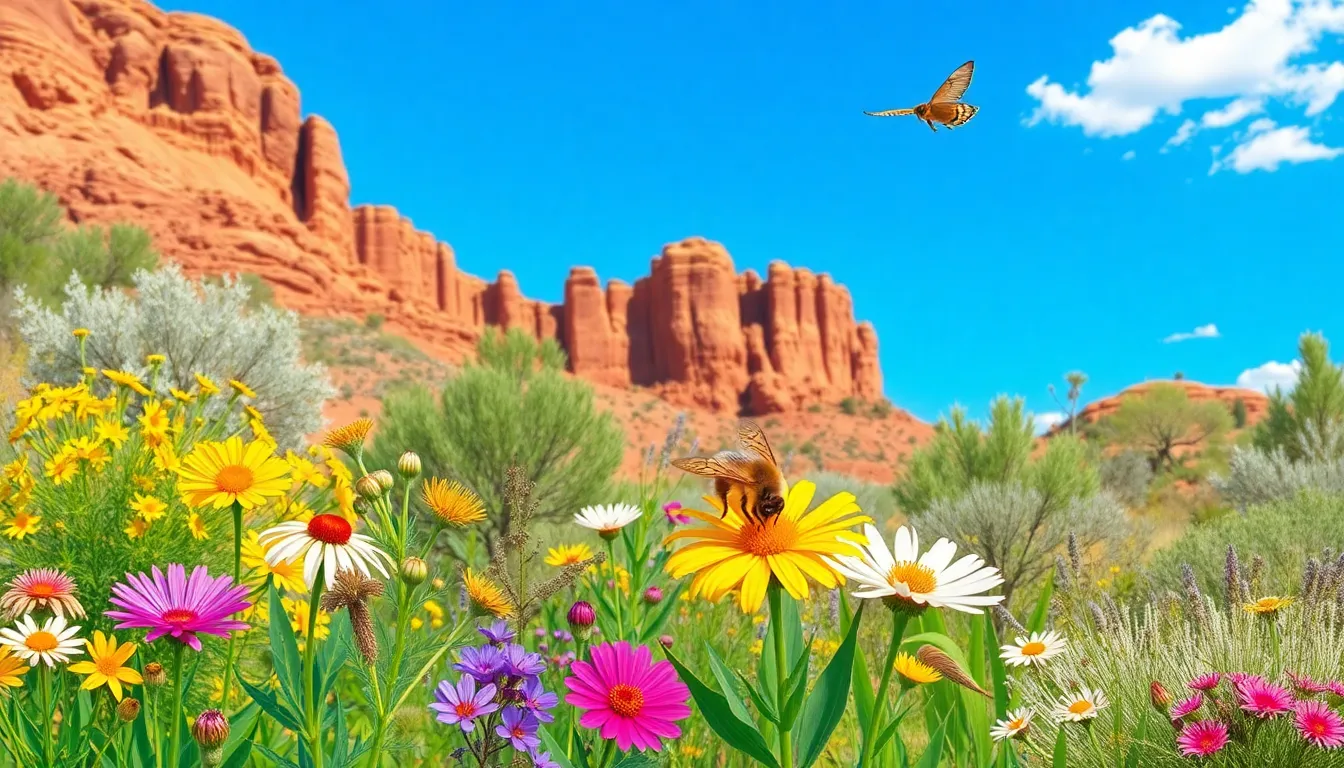
Utah’s native plants play a crucial role in sustaining local ecosystems. These plants offer essential resources for wildlife, enhancing biodiversity throughout the state.
Ecological Benefits
Native plants provide vital ecological functions. They support pollinators like bees and butterflies, fostering healthy populations. In addition to this, native species create habitats for various wildlife, including birds and small mammals. Soil health improves with deep-root systems that prevent erosion and enhance water retention. Local flora also plays a significant role in preserving water quality by filtering pollutants. Consequently, the interdependence between native plants and wildlife promotes a balanced ecosystem vital to Utah’s natural landscape.
Economic Benefits
Native plants contribute significantly to Utah’s economy. Local nurseries and garden centers benefit from increased demand for native species, stimulating job creation. Landscaping projects that utilize native plants often require less water and maintenance, resulting in cost savings for homeowners. In addition, eco-tourism flourishes as visitors seek to explore Utah’s unique flora and natural beauty. Conservation efforts involving native plants can attract funding and grants, further supporting local economies. The long-term sustainability of these plants ultimately yields economic advantages for the state and its communities.
Common Utah Native Plants
Utah’s native flora consists of a variety of resilient species, each contributing to the state’s rich ecosystem. Various categories of these plants thrive in the unique landscapes of Utah.
Perennial Flowers
Perennial flowers shine brightly in Utah’s wild landscapes. The Indian paintbrush displays vibrant red and orange hues, attracting numerous pollinators. Similarly, the desert marigold offers cheerful yellow blooms that enhance the scenery. Avalanche lily showcases striking white petals against the backdrop of mountain ranges. Each of these flowers blooms during different seasons, ensuring blossoms throughout the year, thus supporting local wildlife and beautifying their surroundings.
Shrubs and Bushes
Shrubs and bushes serve essential ecological roles in Utah’s ecosystems. Sagebrush adapts well to arid conditions, providing habitat for various species. Rabbitbrush blooms bright yellow, creating stunning visual displays while attracting bees. Serviceberry offers edible berries for wildlife, enriching the food web. These plants also stabilize soil, preventing erosion, and enhance biodiversity, making them vital for any landscape.
Trees
Trees form another integral aspect of Utah’s native plants. Ponderosa pine towers majestically in mountainous areas, offering habitat for many birds. Cottonwood thrives along rivers, providing shade and shelter for wildlife. Gambel oak grows in various elevations, allowing for a diverse habitat in both lowlands and foothills. These trees contribute to carbon cycling and improve air quality, further enhancing the ecological health of Utah’s environments.
How to Incorporate Native Plants in Landscaping
Incorporating Utah’s native plants into landscaping creates vibrant and sustainable gardens. These plants thrive in local conditions while supporting ecological health.
Selection Tips
Choose plants suited for your specific environment. Consider factors like soil type, sunlight exposure, and moisture levels when selecting. Popular perennial flowers include Indian paintbrush, desert marigold, and avalanche lily, each contributing stunning colors and local wildlife support. Shrubs like sagebrush and serviceberry provide essential habitat. Trees such as ponderosa pine and Gambel oak enhance carbon cycling and air quality. Organizations like the Utah Native Plant Society offer resources to aid in plant selection, ensuring choices align with local ecosystems.
Maintenance Practices
Maintain native plants with minimal intervention. Watering requirements decrease once established, requiring attention primarily during prolonged droughts. Regular mulching retains soil moisture and suppresses weeds. Pruning in late winter promotes healthy growth, ensuring an attractive landscape. Pest issues are often manageable through natural methods, reducing the need for chemical treatments. Monitoring plant health and growth encourages intervention only when necessary, allowing these resilient species to flourish in garden settings.
Conservation Efforts for Utah Native Plants
Conservation efforts focus on preserving Utah’s unique native plants and their habitats. Numerous strategies aim to protect these vital components of the ecosystem.
Organizations and Initiatives
Several organizations play crucial roles in conservation efforts. The Utah Native Plant Society promotes awareness and preservation of native flora. The Bureau of Land Management undertakes habitat restoration projects to enhance ecosystems across the state. Additionally, local botanical gardens engage the community through educational programs and plant sales. Agencies work together to ensure sustainable practices are implemented for the benefit of native plants.
Ways to Get Involved
Individuals can contribute to conservation in meaningful ways. Participating in local volunteer events helps restore native plant habitats. Residents can also join or support organizations dedicated to plant conservation. Homeowners might consider planting native species in their gardens, which encourages local biodiversity. Sharing knowledge about native plants within the community fosters greater appreciation and understanding of Utah’s unique ecology.
Conclusion
Embracing Utah’s native plants not only enhances the beauty of gardens but also strengthens local ecosystems. These resilient species play a crucial role in supporting wildlife and maintaining ecological balance. By choosing native plants for landscaping, residents can enjoy low-maintenance solutions while contributing to conservation efforts.
Engaging with local flora fosters a deeper appreciation for Utah’s unique environment and cultural heritage. As individuals participate in conservation initiatives and plant native species, they help preserve the state’s natural legacy for future generations. The journey into the world of Utah’s native plants is one that enriches both the landscape and the soul.

